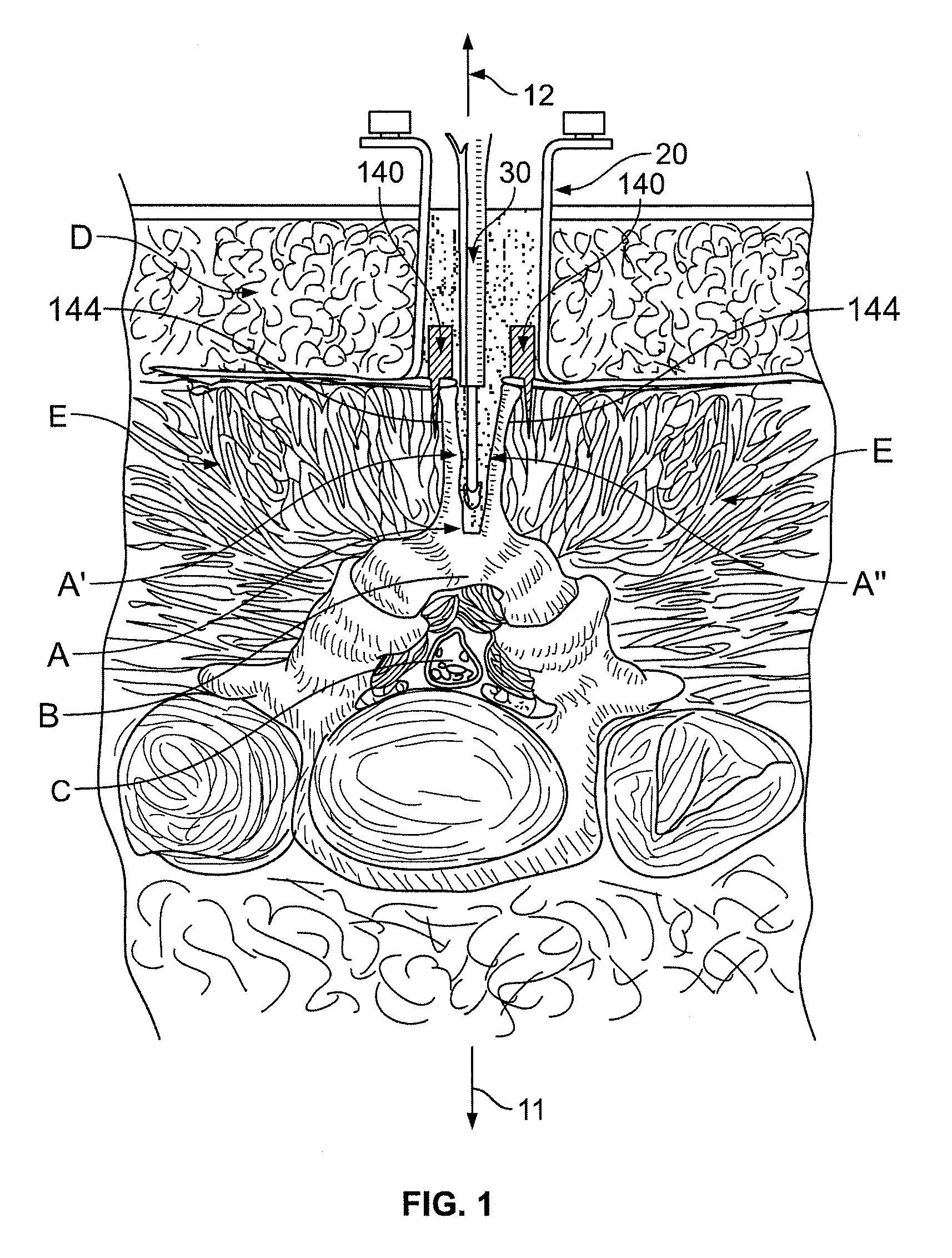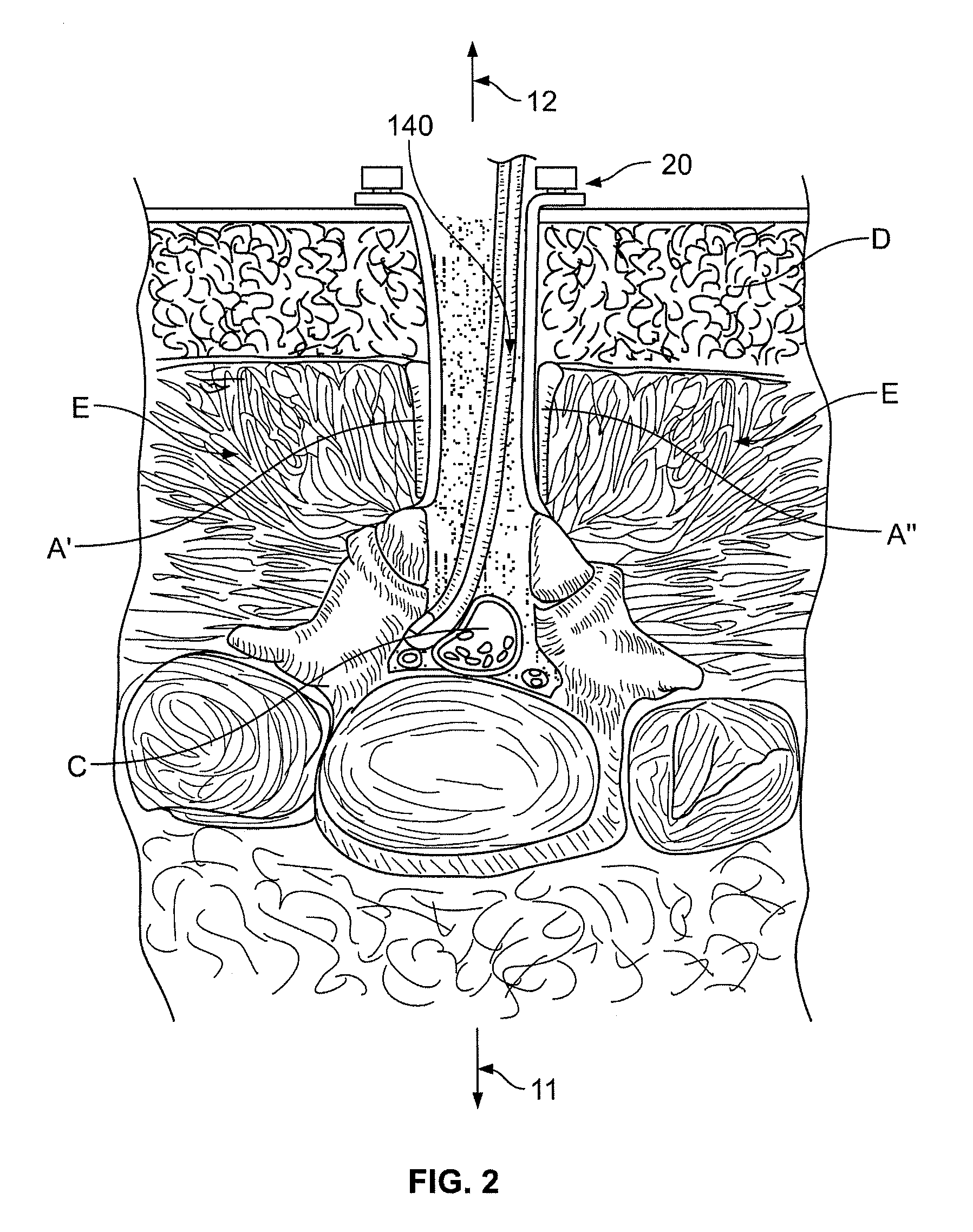System and Method for Centering Surgical Cutting Tools About the Spinous Process or Other Bone Structure
a cutting tool and spinous process technology, applied in the field of devices and methods for centering surgical cutting tools about the spinous process or other bone structure, can solve the problems of significant morbidity and iatrogenic instability, continued patients' problems, and significant morbidity and complications
- Summary
- Abstract
- Description
- Claims
- Application Information
AI Technical Summary
Benefits of technology
Problems solved by technology
Method used
Image
Examples
Embodiment Construction
[0029] Various embodiments of the present invention now will be described more fully hereinafter with reference to the accompanying drawings, in which some, but not all embodiments of the inventions are shown. Indeed, various embodiments of the inventions may be embodied in many different forms and should not be construed as limited to the embodiments set forth herein; rather, these embodiments are provided so that this disclosure will satisfy applicable legal requirements. Like numbers refer to like elements throughout. The singular forms “a,”“an,” and “the” include plural referents unless the context clearly dictates otherwise.
[0030] Although some embodiments of the invention described herein are directed to a method and system for performing a minimally-invasive spinal surgical procedure via a spinous process defining a posterior axis, it will be appreciated by one skilled in the art that the various embodiments of the invention are not so limited. For example, aspects of the cu...
PUM
 Login to View More
Login to View More Abstract
Description
Claims
Application Information
 Login to View More
Login to View More - R&D
- Intellectual Property
- Life Sciences
- Materials
- Tech Scout
- Unparalleled Data Quality
- Higher Quality Content
- 60% Fewer Hallucinations
Browse by: Latest US Patents, China's latest patents, Technical Efficacy Thesaurus, Application Domain, Technology Topic, Popular Technical Reports.
© 2025 PatSnap. All rights reserved.Legal|Privacy policy|Modern Slavery Act Transparency Statement|Sitemap|About US| Contact US: help@patsnap.com



